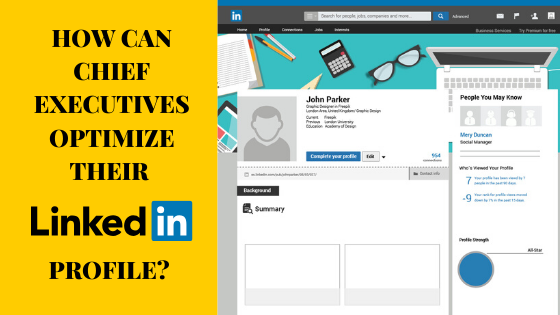Most C-suites tell me that they have a LinkedIn profile, but they hardly do anything with it. Lot of them do not have a LinkedIn profile. The reasons are many fold ranging from paucity of time & interest to privacy concerns. CXO(s) does not see any benefit having a LinkedIn profile. There is a value attached to having a LinkedIn profile if you are a chief executive. I am sharing a game plan to leverage those benefits:
- Make changes in your privacy settings: If you wish to keep your profile visibility private or do not wish to let your current company or boss view who you have connected with, you can go to privacy settings & change the status of “ Who can see your connections” to “ ONLY YOU”.
- Summary section: It is a good strategy to include your email & phone number at the beginning of your summary statement. This is a good way to allow people visiting your profile, reach out to you even if they are your second or third degree connections.
- PRIVACY TIP: Create a new Gmail account with a variation in your name which is professional & business friendly & use that email for LinkedIn summary statement.
- Keyword heading: When deciding to populate your headline, think about what recruiter, hiring manager or key decision making would be searching when they will be scouting for a professional like you. An advanced degree or certification, awards or recognition, information related to size/scope such as “ Fortune 500 companies”, “ High growth startups”, “Board Member” & “TEDX speaker”.
- Detailing: Your LinkedIn profile should be as professional as it can be. It should be written in third person. The details in your profile should not be as thoroughly included as in your executive resume. It should be sufficient to create that interest. You should never use your profile to broadcast that you are looking for an opportunity. A LinkedIn profile is the best way to develop thought leadership & network with professionals in identified areas.
- Expand your network: When you are developing your network with recruiters, headhunters, hiring managers, key decision makers & influencers, you are creating a string of opportunities which can be leveraged in the present as well as in the future. A client, running his fin-tech venture, was telling that his LinkedIn connections are almost non-existent. I advised him to find those working in/associated banking & financial services & fintech sectors through direct searches & LinkedIn groups & invite them to your network. Within a span of 1 month, he was able to expand his network to 200 plus professionals. He now gets regular feeds on important information & updates through his profile.
- Thought Leadership: Your professional branding on LinkedIn goes a long way in helping you develop that thought leadership. Here some are the ways to develop your thought leadership:
- If you agree with a Forbes or HBR article, share that in your network
- Use LinkedIn pulse to write an article or blog on a particular topic, insights about a particular industry or analysis about a debate. You can go one step further by inviting other professionals in your network to comment on your article.
- If you have recently attended a seminar or conference, speaker at an event or led a community event, share that in your activity broadcast. Including pictures or videos of the event is even more remarkable.
- If you are an entrepreneur, sharing an image of a recently concluded marketing or community building event would give your brand a better presence & marketability.
These are some of key pointers for using LinkedIn as a tool that will help you build a distinctive brand.
